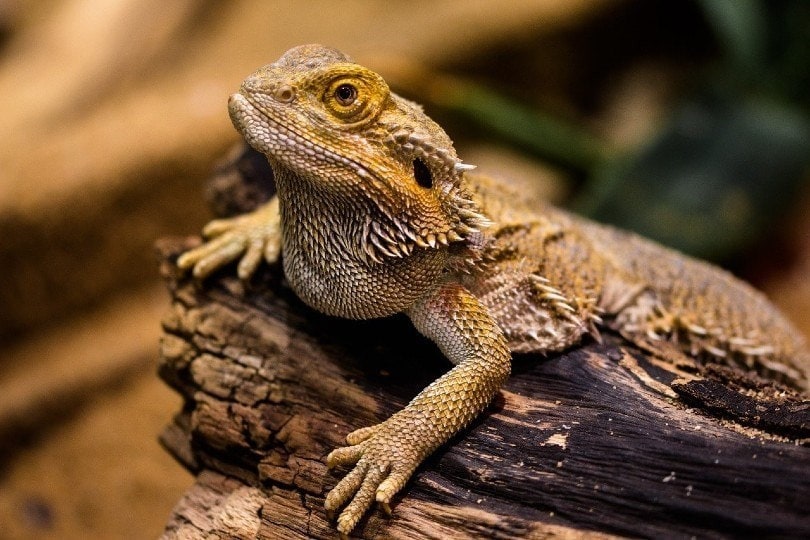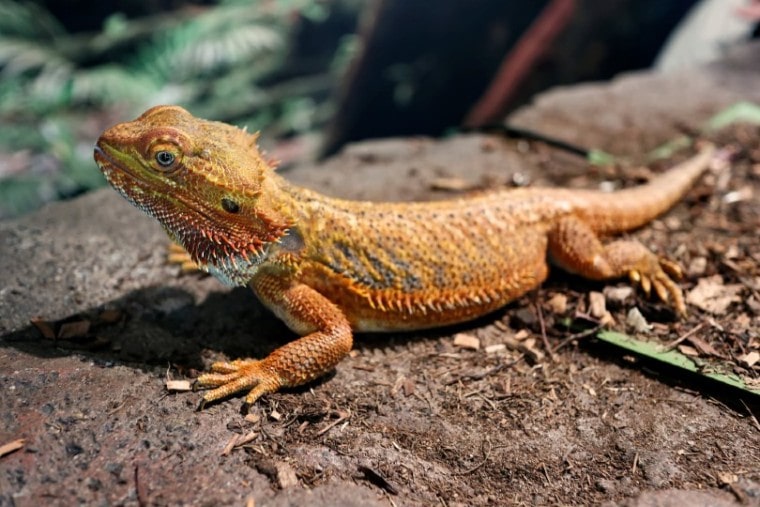
When you’re looking to add a reptile to your house, the Central Bearded Dragon is what many people start with, and it’s not hard to see why. They’re fun to play with and extremely docile.
But what else do you need to know to take care of these fun reptiles, and how big of a tank do they need to stay happy? We answer those questions and more here, telling you everything that you need to know before heading out to the pet store.
Quick Facts About Central Bearded Dragon
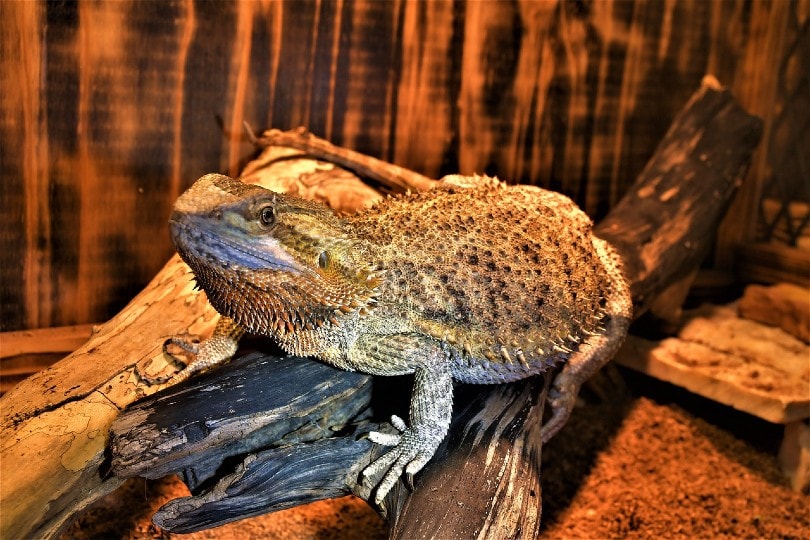
| Species Name: | Pogona vitticeps |
| Common Name: | Central Bearded Dragon |
| Care Level: | Medium |
| Lifespan: | 10 to 15 years |
| Adult Size: | 24 inches |
| Diet: | Live invertebrates, vegetables, and supplements |
| Minimum Tank Size: | 55 gallons |
| Temperature & Humidity: | 75- to 85-degree-Fahrenheit temperature gradient, a 95- to 100-degree-Fahrenheit basking area, and 35-40% humidity |
Do Central Bearded Dragons Make Good Pets?
If you’re looking for a pet that likely won’t give you any headaches, a Central Bearded Dragon is an outstanding choice. Their mild temperament and low-maintenance style make them a popular choice for those with busy lifestyles and plenty of time to kill.
As long as you’re not expecting to play fetch or take long walks on the beach together, a Central Bearded Dragon might be everything that you’ve hoped for in a pet.
Appearance
Central Bearded Dragons have a triangular-shaped head with round pupils and fleshy tongues. They have lateral spines down their sides, all the way to their tail. Both males and females have beards, as these help them look bigger to predators.
However, as your Central Bearded Dragon gets used to you, you’ll see this less and less because they only display their beard when they feel threatened. They range in color from brown to orange, but you might find a few with a touch of red or even yellow in their pigmentation.
How to Take Care of Central Bearded Dragons
Habitat, Tank Conditions & Setup
Tank
Central Bearded Dragons need tons of space in their enclosures. They need to be able to completely turn around inside the enclosure without touching any of the sides.
Therefore, you should get a tank that’s between 4 and 6 feet long, at least 2 feet wide, and at least 2 feet tall. This is a large enclosure, but your Central Bearded Dragon needs the space to live a healthy and happy life.
Lighting
While you might think that you can get by with a supplement that gives your Central Bearded Dragon calcium, what they really need are those supplements and UVB light. They don’t need a ton of UVB light at one time, but they do need at least 10 to 12 hours of it per day.
Heating (Temperature and Humidity)
Central Bearded Dragons can’t regulate their own body temperature, so you need to set up a temperature gradient inside the tank. The tank should be 75 degrees Fahrenheit on the cool side and about 85 degrees Fahrenheit on the warmer side.
They also need a basking area that can reach 100 degrees Fahrenheit, and the humidity level should stay between a reasonable 35% and 40%.
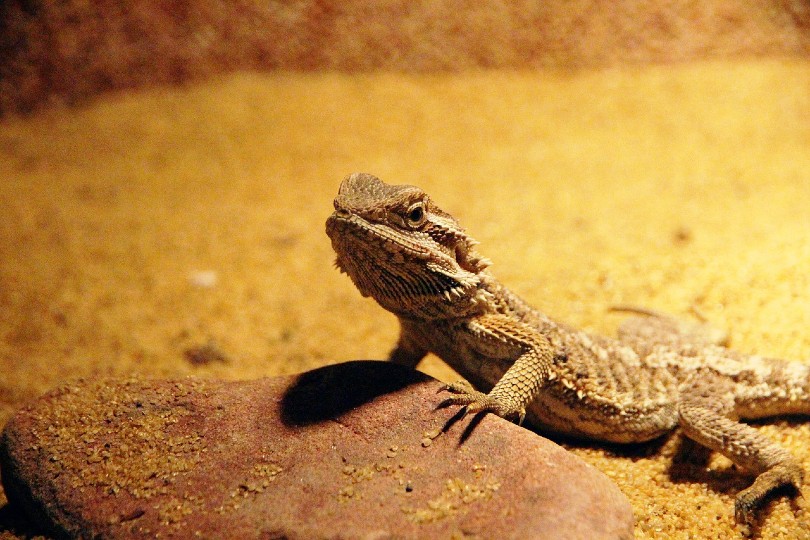
Substrate
While many owners want to mimic a Central Bearded Dragon’s natural habitat by using sand or dirt as a substrate, this can present health concerns if your Central Bearded Dragon accidentally consumes it.
This is relatively common with domesticated Central Bearded Dragons, which is why we recommend a cheaper option, like newspaper. You can also opt for a reptile carpet, but you should get at least two of them so you can put one in while cleaning the other one.
Tank Recommendations
| Tank Type: | 6’ x 2’ x 2’ enclosure |
| Lighting: | Low-level UVB light for 10 to 12 hours a day |
| Heating: | 75- to 85-degree-Fahrenheit temperature gradient, 100-degree-Fahrenheit basking area, and 35-40% humidity |
| Best Substrate: | Newspaper |
Feeding Your Central Bearded Dragon
The primary source of food for a young Central Bearded Dragon should be crickets. Feed your Bearded Dragon at least twice a day, with the first feeding a few hours after turning on the lights and the second a few hours before shutting them off, as this helps with their digestion.
To ensure that your Central Bearded Dragon gets all the necessary nutrients when eating, you should feed the crickets potato slices, shredded carrots, or commercial cricket food. Feed adolescent Central Bearded Dragons 10 to 15 small crickets per feeding and adults five to 10 large crickets.
Supplement with greens, mealworms, and supplements to keep your reptile healthy. Once your Central Bearded Dragon reaches adulthood, switch the cricket to plant ratio — their primary food source should now be plants.
Finally, never feed them anything larger than the space between their eyes, as this can cause major health complications.
Diet Summary (Adolescents)
| Crickets: | 75% of diet |
| Greens and other veggies: | 15% of diet |
| Mealworms: | 5% of diet |
| Supplements: | 5% of diet |
Diet Summary (Adults)
| Greens and other veggies: | 80% of diet |
| Crickets: | 15% of diet |
| Mealworms: | 5% of diet |
| Supplements: | 5% of diet |
Keeping Your Central Bearded Dragon Healthy
When you’re meeting all their needs, it’s unlikely that your Central Bearded Dragon will experience any health problems. However, nobody’s perfect, so it’s best to have an idea of what issues to look for.
If you notice any abnormal symptoms or behavior, you need to take your Central Bearded Dragon to a vet who works with reptiles to figure out what’s happening.
If you notice that your Central Bearded Dragon has sunken eyes or folded and inelastic skin, you have a dehydrated reptile. Give them more water, and spray them down as soon as possible.
Another major problem that novice Central Bearded Dragon owners can experience is impaction. This occurs when you overfeed or give your pet food that’s too large for them. This can become lodged in their system and cause paralysis.
Common Health Issues
Lifespan
For a reptile, a Central Bearded Dragon has a comparatively short lifespan. Still, they can live anywhere from 10 to 15 years, so ensure that you can care for them for the rest of their life. This way, you don’t need to rehome them down the road.
Also, keep in mind that taking proper care of your Central Bearded Dragon is critical to giving them a healthy and happy life. If you feed them the wrong diet or don’t take care of them properly, they likely won’t live as long.
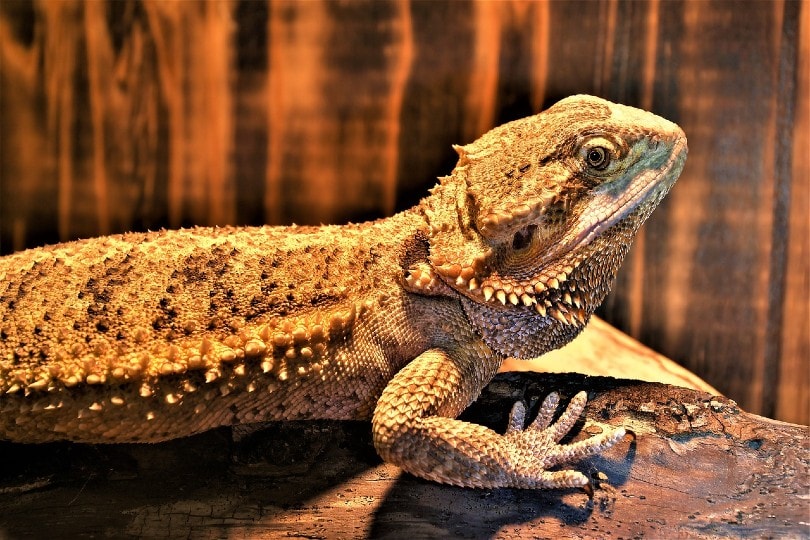
Breeding
Breeding a Central Bearded Dragon takes quite a bit of work. They typically breed shortly after brumation, and they need a nest box with 10 inches of sand or soil. The female will lay three different clutches of eggs, with up to 35 eggs per clutch.
That means one mating session can result in over 100 babies! Once the female buries her eggs in the soil, you need to remove them and place them in an incubator with water and vermiculite soil that’s between 82 degrees and 86 degrees Fahrenheit.
When they hatch, you need to separate the baby Central Bearded Dragons from each other as soon as possible, which means you’ll need up to 100 different mini enclosures.
Finally, keep the female separate from the male both before and after the breeding season.
Are Central Bearded Dragons Friendly? Our Handling Advice
Central Bearded Dragons are extremely friendly, so you typically don’t need to worry about any biting or nipping. However, it helps if you hand-feed them relatively often. They will start to view you as a nurturing figure instead of a potential predator.
Their docile nature is one of the many reasons that they make such excellent pets for beginners and experts alike.
Shedding & Brumation: What to Expect
While your Central Bearded Dragon can shed several times throughout the year, it’s most common in early spring and summer. Young Central Bearded Dragons will shed every few weeks, while adults only do it every few months.
They shed in patches, but this usually doesn’t take too long, typically only several days. For brumation, simply lower the tank’s temperature a few degrees over several weeks to initiate winter and raise the temperature the same way at the start of spring.
How Much Do Central Bearded Dragons Cost?
There are few reptiles as affordable as a Central Bearded Dragon. Most cost between $50 and $80. While this is slightly more expensive than some other Bearded Dragon species, it’s still affordable.
In fact, they’re so affordable that it’s hard for amateurs to breed these animals and make a profit.
Care Guide Summary
Conclusion
While Central Bearded Dragons are a blast to have, they might be a little more complicated to take care of than you might expect. But you shouldn’t let that small challenge deter you from adding one to your home. Once you get the hang of things, it’s relatively easy, and they’re a blast to have!
Featured Image Credit: Joyce Mar, Shutterstock


